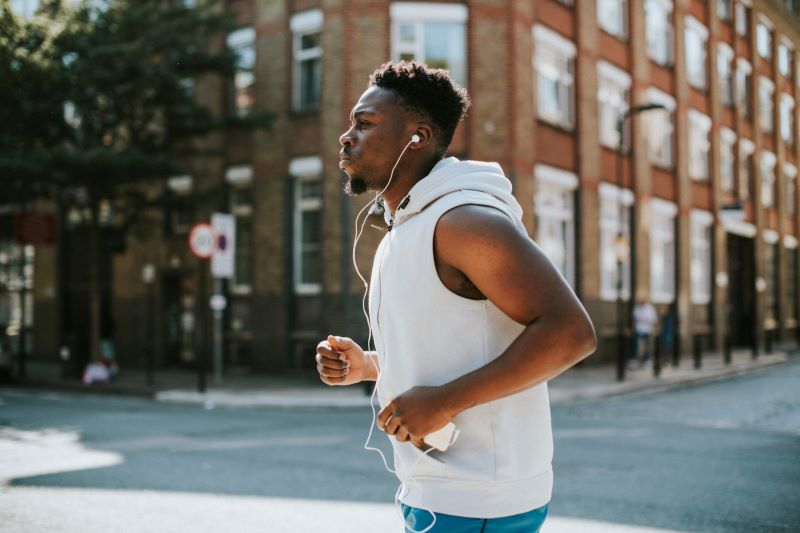Back in December, we started covering an interesting Finnish study about women’s orgasms. A team of researchers compiled the results of five different sex surveys taken over four decades starting in the early 1970s. Over 10,000 men and women participated, and the researchers focused on women’s orgasms. They published their findings in October 2016 in the journal Socioaffective Neuroscience and Psychology.
In our previous blog post, we shared some of the results: women’s first orgasms, how they felt about having orgasms, and what it took to get them there. We’re going to continue the discussion today, highlighting the role of partners, communication, and sexual self-esteem. We’ll also look at some of the factors that inhibit orgasm and talk about the frequency of multiple orgasms.
(Note: Not all of the surveys asked the same questions. In some cases, results pertain to just one survey.)
Role of Partners: Oral Sex and Manual Stimulation
Many women reach orgasms when their partner performs oral sex or manual stimulation (touching the genitals). While not all women climax this way, the researchers found that women who receive these types of sexual stimulation reach orgasm more often. This doesn’t mean that vaginal orgasms through intercourse are less important or pleasurable. It’s more of a reminder that there are many pathways to orgasm.
Oral sex was particularly helpful for women with low sexual desire, as well as women who had trouble talking about sex with their partner, the authors explained. However, many women were reluctant to ask their partner for oral sex.
Good communication between partners was just as important for women’s orgasms as sexual technique, the surveys revealed. While skillful partners were helpful, discussing and finding ways to bring mutual pleasure was also important.
Sexual Self-Esteem
Women with high sexual self-esteem, who felt confident about their abilities in the bedroom, tended to have orgasms more frequently. In fact, one survey found that only 10% of women who did not think they were good in bed had an orgasm at their last intercourse. That said, there were times when good communication with a partner compensated for low sexual self-esteem, which helped with orgasms.
Accepting oneself and one’s body, as well as being able to focus solely on the sexual activities, without distractions, also increased the chances of orgasm.
Factors That Could Inhibit Orgasm
What makes women less likely to reach orgasm? Stress, fatigue, and trouble concentrating were among the most commonly cited reasons. Partners who were less skillful, and those who went “too fast” could also interfere.
Other factors included the following:
- Feeling that sex was not important for the relationship
- Lack of physical intimacy in relationship
- Lack of sexual desire
- Lack of oral sex or manual stimulation
- Vaginal dryness, painful intercourse
- Early orgasm of partner, short duration of intercourse
- Unhappy relationship
- Feeling sexually undesirable
- Partner’s erection problems
- Illness
Multiple Orgasms
Multiple orgasms are more common for women than for men. In one survey, 12% of the women said they had had two or more orgasms the last time they had intercourse. In another, women who had multiple orgasms said they frequently used sex toys and that their sexual activities lasted over an hour.
“In many respects, multi-orgasmic women displayed strong sexual interests, and were sexually very active,” the authors wrote.
Age
The researchers noticed that women younger than 35 reported more trouble reaching orgasm over time, especially since the 2000s. This finding was interesting, since the internet and other media offer women lots of information on orgasms and enjoyable sex. However, stress, busy lives, and less privacy might be involved, they said.
The Takeaway
Over these two blog posts, we have seen that numerous factors influence women’s orgasms - internal and external, physical and emotional. Still, a woman’s climax is highly personal and what works for one woman won’t necessarily work for another. And some factors, such as resolving painful intercourse, improving communication between partners, and accepting one’s body, may need additional assistance from a doctor or sex therapist.
If you or your partner have concerns about orgasms, we encourage you see the following links and, if appropriate, talk to your healthcare provider.
Orgasm Problems: What Can Women Do?
Benevolent Sexism and Female Orgasm
Anatomy Could be a Key to Orgasm
After Orgasm: A Range of Reactions
Resources
Socioaffective Neuroscience and Psychology
Kontula, Osmo PhD and Anneli Miettinen MSSc
“Determinants of female sexual orgasms”
(Full-text. Published: October 25, 2016)
https://www.ncbi.nlm.nih.gov/pmc/articles/PMC5087699/pdf/SNP-6-31624.pdf
You may also be interested in...
Other Popular Articles

What Is Jelqing, and Does It Actually Work?
The term “jelqing” refers to a set of penis stretching exercises that some believe can make the penis bigger. Although the practice has gained attention and popularity in blogs and internet forums in recent years, there is no scientific evidence that it is an effective way to permanently increase the size of one’s penis. In fact, in some cases, jelqing may actually cause damage to the penis, so it is a good idea to get all the facts before setting off to try it.

What Is Sensate Focus and How Does It Work?
Sensate focus is a technique used to improve intimacy and communication between partners around sex, reduce sexual performance anxiety, and shift away from ingrained, goal-oriented sexual patterns that may not be serving a couple.

What Is the Average Penis Size?
If you have ever wondered how your penis compares to others in terms of size, you are not alone. Many men are curious to know how their penises stack up compared to the average. Unfortunately, general curiosity can sometimes give way to full-on obsession and anxiety about penis size. This can be an unhealthy and often unnecessary fixation, especially because most men who think their penises are too small have perfectly normal-sized penises.

Can Sex Reduce Menstrual Cramps?
The SMSNA periodically receives and publishes ‘guest editorials.’ The current article was submitted by Mia Barnes, a freelance writer and researcher who specializes in women's health, wellness, and healthy living. She is the Founder and Editor-in-Chief of Body+Mind Magazine.
Having sex while you experience menstrual cramps is healthy and can provide significant benefits. While it might not be the first activity that comes to mind when your PMS or period cramping begins, many people enjoy sex to reduce menstrual cramps, experience increased pleasure and benefit from other advantages. Learn more about having sex while menstrual cramps are happening and how it can help your body.

What Is Edging and Why Do People Do It?
Edging is the practice of stopping sexual stimulation before reaching orgasm to prolong a sexual experience. The term stems from the concept of approaching the metaphorical “edge” of orgasm but stopping before going over the edge.

The Effect of Regular Aerobic Exercise on Erectile Function
Erectile dysfunction (ED) is the inability to achieve or maintain an erection sufficient for satisfactory sexual activity. As men get older, their erectile functioning may naturally decline due to changes in testosterone levels, cardiovascular functioning, and the potential development of other chronic medical conditions that become more common with age.


